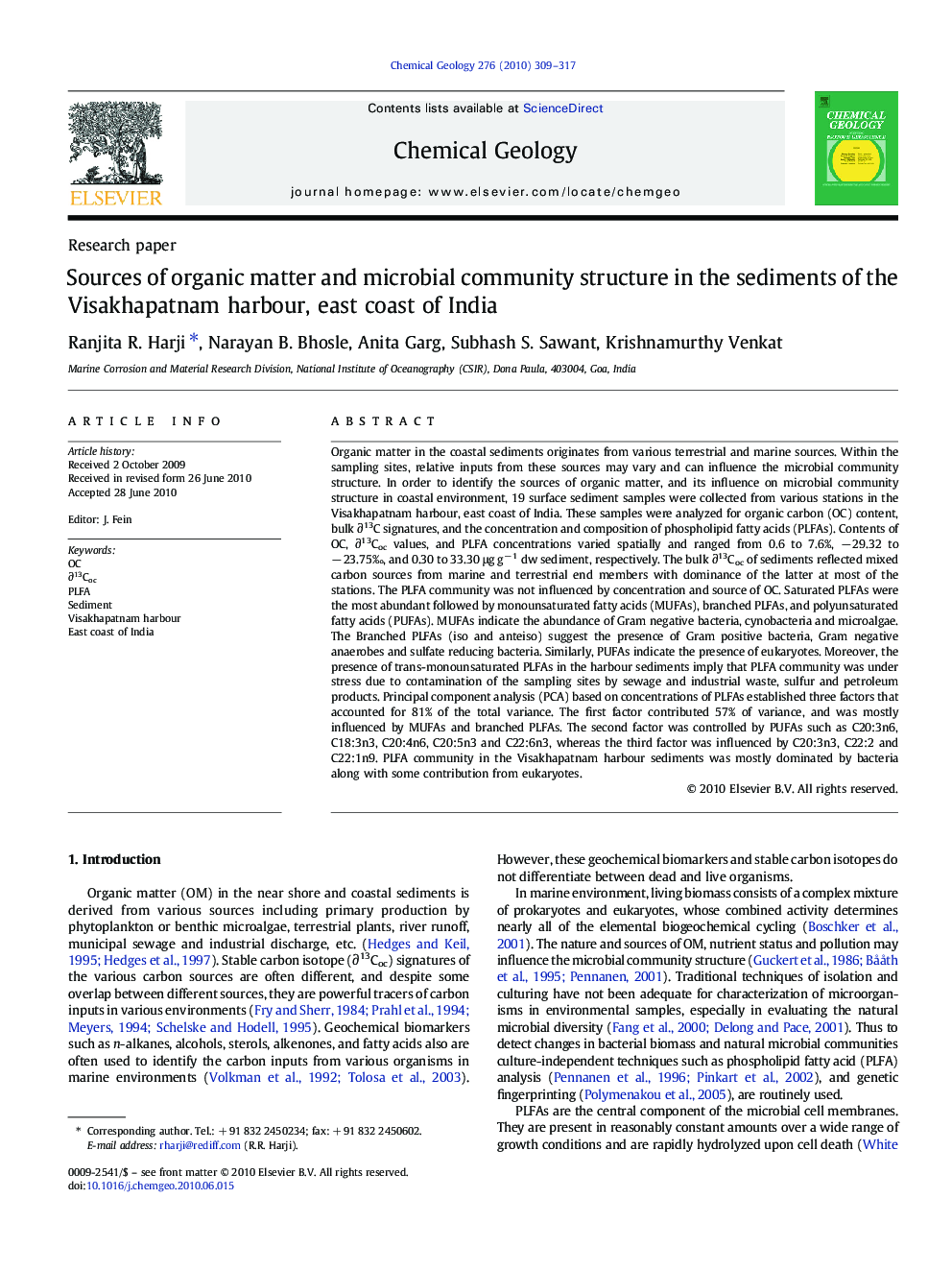| کد مقاله | کد نشریه | سال انتشار | مقاله انگلیسی | نسخه تمام متن |
|---|---|---|---|---|
| 4700025 | 1637683 | 2010 | 9 صفحه PDF | دانلود رایگان |

Organic matter in the coastal sediments originates from various terrestrial and marine sources. Within the sampling sites, relative inputs from these sources may vary and can influence the microbial community structure. In order to identify the sources of organic matter, and its influence on microbial community structure in coastal environment, 19 surface sediment samples were collected from various stations in the Visakhapatnam harbour, east coast of India. These samples were analyzed for organic carbon (OC) content, bulk ∂13C signatures, and the concentration and composition of phospholipid fatty acids (PLFAs). Contents of OC, ∂13Coc values, and PLFA concentrations varied spatially and ranged from 0.6 to 7.6%, − 29.32 to − 23.75‰, and 0.30 to 33.30 μg g− 1 dw sediment, respectively. The bulk ∂13Coc of sediments reflected mixed carbon sources from marine and terrestrial end members with dominance of the latter at most of the stations. The PLFA community was not influenced by concentration and source of OC. Saturated PLFAs were the most abundant followed by monounsaturated fatty acids (MUFAs), branched PLFAs, and polyunsaturated fatty acids (PUFAs). MUFAs indicate the abundance of Gram negative bacteria, cynobacteria and microalgae. The Branched PLFAs (iso and anteiso) suggest the presence of Gram positive bacteria, Gram negative anaerobes and sulfate reducing bacteria. Similarly, PUFAs indicate the presence of eukaryotes. Moreover, the presence of trans-monounsaturated PLFAs in the harbour sediments imply that PLFA community was under stress due to contamination of the sampling sites by sewage and industrial waste, sulfur and petroleum products. Principal component analysis (PCA) based on concentrations of PLFAs established three factors that accounted for 81% of the total variance. The first factor contributed 57% of variance, and was mostly influenced by MUFAs and branched PLFAs. The second factor was controlled by PUFAs such as C20:3n6, C18:3n3, C20:4n6, C20:5n3 and C22:6n3, whereas the third factor was influenced by C20:3n3, C22:2 and C22:1n9. PLFA community in the Visakhapatnam harbour sediments was mostly dominated by bacteria along with some contribution from eukaryotes.
Research Highlights
► ∂13Coc indicates dominance of C3 plant OM.
► Saturated PLFAs were most abundant followed by MUFA.
► Abundance of MUFAs and branched PLFAs suggest bacteria as the most abundant microbial population in the sediment.
Journal: Chemical Geology - Volume 276, Issues 3–4, September 2010, Pages 309–317